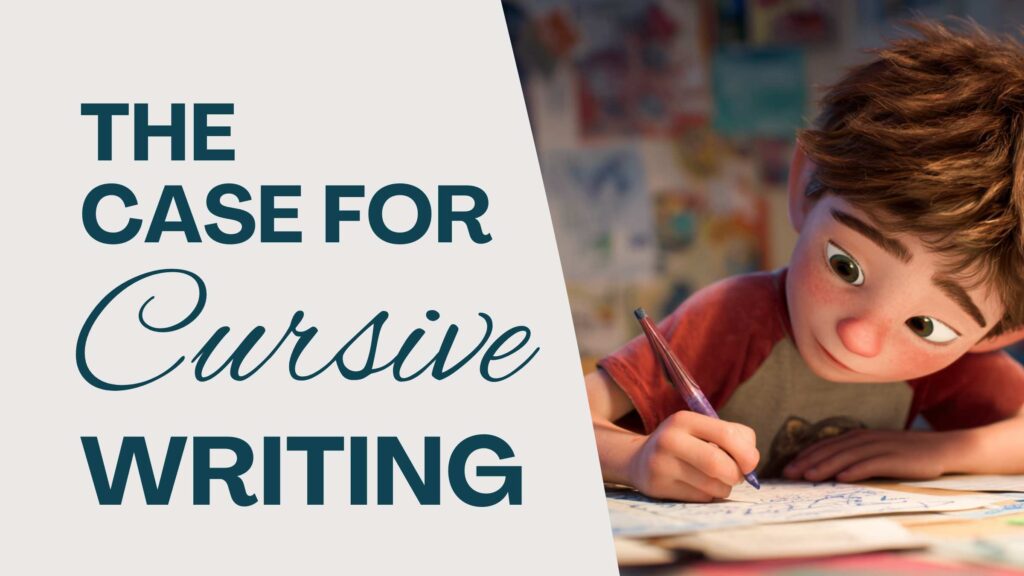The Case for Cursive Writing in Schools

24 states in the US now require cursive handwriting to be taught in schools. And hopefully more to come. Even abandoned ‘print-handwriting’ (connecting print letters) lessons have started again in some areas. Some educators claim it takes too much time to teach and isn’t useful in the 21st century. BUT the positive benefits for cursive far outweigh any contrived arguments not to teach it—some include:
Reading and Writing
- improves spelling accuracy (the need to think about each letter’s name and sound)
- increases ability to write for longer periods of time (connecting letters with fluid motion)
- influences the ability to tell a story (cognitive)
Physical agility
- increases fine/small motor control and coordination with fingers, gross/large motor control for the arm and upper body, stronger visual skills
Brain benefits
- stimulates networks in the brain (not activated by typing on a keyboard)
[BBC ‘California signs cursive writing into law – what are the brain benefits’ January22, 2024]
- helps the brain remember information and details [James KH Englehardt L. ‘The Effects of handwriting experience…’ Neuroscience Education December 2012]
Take your child to a University Library such as the Yale Beinecke Library (New Haven CT) or the JP Morgan Library (NYC), National Archives (DC), or Presidential Libraries to see handwritten historical documents and letters. Letters written by soldiers during wartimr. Original manuscripts of famous books. Find them. Perhaps buy a copy of the Declaration of Independence to try to read it, including the signatures. Then have lined paper ready for practicing cursive handwriting—together. It will benefit your child’s brain activity and memorization ability and you’ll be having quality time while having fun watching their skill and understanding of written language grow.
